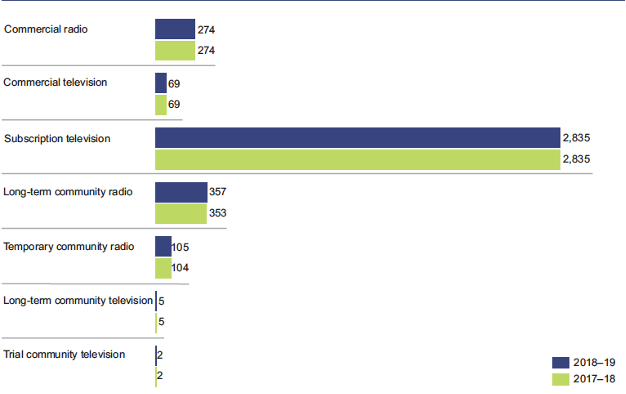Geography and demographics are important factors affecting Australia’s media. As the world’s sixth-largest country, Australia compares in size to the contiguous United States. This large landmass only has a population of 25.4 million people (ABS, 2019), which is concentrated in its state and territory capitals, with approximately 90 per cent of Australians living in urban centres.
In a country the size of Australia – 21.5 times the size of Germany and 186 times the size of Switzerland – and with a population density of close to three persons per square kilometre, it is no surprise that there are regional divides. Actually, concerning geographical challenges for news media, the country is largely unchanged in comparison with its depiction in the 2011 MDM edition. Large parts of Australia are unpopulated or have so few people living in them that infrastructure – in particular broadband and mobile telephony coverage – has always been a problem for regional areas and has been hotly fought over politically (Josephi, 2011). Broadband provision is problematic in regional and remote areas.
Access to radio is put at 99 per cent, and the availability map for 2007 shows that most of Australia is serviced by one to five stations, and up to twelve in the metropolitan centres (ACMA, 2009). As seen in Figure 1, there are 274 commercial radio broadcasting licences in Australia, including 150 FM licences and 106 AM licences, with the largest concentrations of commercial radio licences in the major capital cities. Most regional centres are served by two licensees, typically with one AM and one FM service. There are 69 commercial television broadcasting licences (ACMA, 2020).

Source: Graph from ACMA, 2020: 29
Through the public broadcaster, Australian Broadcasting Corporation (ABC), 44 regional local radio services are available on AM or FM radio, with 43 available via streaming throughout Australia, and four national broadcast networks: the national talk network, Radio National; the national news network, News Radio; the national youth network, Triple J; and the national classic music network, ABC Classic. Other digital services include Double J, ABC Classic 2, ABC Jazz, ABC Country, ABC Grandstand, Triple J Unearthed, and ABC Kids Listen (ABC, 2019). Via shortwave, satellite, and online, Radio Australia broadcasts in the Asia-Pacific region.
The second public broadcaster, Special Broadcasting Service (SBS), whose brief it is to broadcast to Australia’s various migrant ethnic groups (Ang, 2008), broadcasts in 68 languages to all capital cities and key regional centres on a mix of FM and AM frequencies (see also Josephi, 2011). SBS radio provides Australian and international news, homeland news, and a mixture of current affairs, interviews, community information, sport, and music (ACMA, 2008).
In terms of television, the public broadcasters ABC and SBS – as well as three major commercial networks Seven, Nine, and Ten – are the main providers of free-to-air television. All these broadcasters offer on-demand versions of their brands.
The country is divided into 28 distinct commercial television licence areas. According to the broadcast planning, Adelaide, Brisbane, Melbourne, Perth, and Sydney should have three commercial television licence operators, and the Seven, Nine, and Ten networks operate in each of these cities. There are also three licensees operating in Canberra and Hobart, and two in Darwin. In regional areas, the majority of broadcasting is provided variously by the NBN, Prime, Seven Queensland, Southern Cross Broadcasting, and WIN networks (ACMA, 2008).
As noted above, there have been closures of regional news bureaus, and the availability of local news in the regions of Australia “has sharply declined over the last five years and is likely to decline further”, according to a recent report on regional news (CMT, 2019). More recently, the Centre for Media Transition has reported: “Between 2008 and 2018, 106 local and regional newspaper titles closed across Australia. These closures have left 21 local government areas without coverage from a single local newspaper (either print or online), including 16 LGAs in regional Australia” (CMT, 2020). This has given rise to dozens of communities becoming news deserts.
